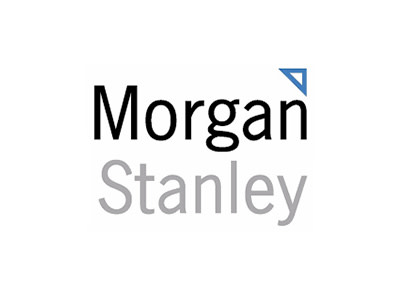Long standing manager of the fund, Richard Ford, retired in August 2024
The new management team has notable experience of running bond funds and worked at Morgan Stanley for a number of years
They have kept the investment process broadly the same as Ford used for many years
The fund does not currently feature on the Wealth Shortlist of funds chosen by our analysts for their long term performance potential
How it fits in a portfolio
The Morgan Stanley Sterling Corporate Bond fund aims to pay an income and generate some growth over the long term by investing in a wide selection of corporate bonds. The fund is run in a more conservative way than some corporate bond funds, with positioning compared to the benchmark being a meaningful consideration.
We think this fund is a good core option within the sterling corporate bond sector and expect it to perform similarly to the peer group average over the short term, with potential for outperformance over longer time periods. It could therefore add some balance to an investment portfolio focused on shares or higher-risk bond funds.
Manager
Longstanding manager Richard Ford retired in August 2024, having worked at Morgan Stanley in various roles for over 30 years.
Dipen Patel, co-manager of the fund with Ford since 2018, remains as one of three managers of the fund. He’s joined by Leon Greyner, Head of European Multi-Sector, and Joseph Mehlman, Head of US Investment Grade Credit. Greyner and Mehlman are experienced investors, both having joined Morgan Stanley in 2002.
The three managers are supported by a strong fixed income team at Morgan Stanley based across the globe, including support from Shane McNamara as a portfolio analyst.
While it was disappointing to see Ford retire somewhat unexpectedly in 2024, the combined experience of Patel, Greyner and Mehlman is significant. They also manage a number of other fixed income funds at Morgan Stanley. But we think that because of their experience, alongside the support and resources available to them at Morgan Stanley, they have the potential to do a good job for investors over the long term.
Process
With Ford retiring, there was potential for the new management team to make changes to the process and philosophy of the fund. However, this hasn’t been the case and the team continues to manage the fund in the same way.
The managers start by forming their outlook for the wider global economy, considering the prospects for growth, interest rates, inflation and more. They then research individual companies and bonds, trying to make sure companies have the ability to pay the full interest on their bonds and make the capital repayments too.
They think superior long-term returns will be generated by investing in better quality bonds. Although these bonds could provide a lower return than higher-risk ones when the economy's doing well, they feel these higher-quality bonds will more than make up for it by falling less when bond markets fall. The managers also take account of valuations to avoid bonds that could be too expensive, or where the yield is too low to offset the risks they've identified.
The fund invests heavily in the UK, but includes some global bonds too. Where the managers invest in overseas bonds, they remove the effect of currency exchange rate changes by using derivatives, which can add risk.
At a high level, the managers look to invest this fund in a similar way to the benchmark, however with a few important differences. These differences include some investments in high yield bonds, which are not part of the benchmark. These are bonds that offer a higher income to investors, but are issued by companies that have a greater risk of not paying their debts. The managers also prefer to invest less in bonds issued by government-related companies and more invested in bonds issued by financial companies.
This means that changes to the amounts invested in high yield bonds, or large sectors within the universe such as financials, industrials or utilities, can be expected to not change much over the short term. This is true of the 12 months to the end of December 2024, with around 33% of the fund invested in banks at both the end of 2023 and 2024. The amount invested in industrials has decreased from around 21% to 15%, with an increase in investments within utilities from around 9% to 11%. The fund had around 7% invested in high yield bonds at the end of December 2024, which is a similar amount as at the end of 2023. Investments in high yield bonds add risk.
The managers have kept the duration position broadly the same over the year, at around 5.7 years, which is slightly higher than their benchmark duration at the end of 2024. Duration is measured in years and reflects how sensitive the fund is to interest rate changes. The higher the duration value, the more sensitive the fund is to interest rate changes.
Going forward, the team continues to think that interest rates will be cut from here, but note it’s less clear how quickly or by how much. Inflation is proving sticky and the US economy in particular is showing signs of strength, making predictions about interest rates challenging.
Culture
Morgan Stanley’s scale and strong history of managing clients’ money means the managers can rely on an extensive team of experienced bond investors to help them find the best investment opportunities. We view it positively that the managers are incentivised to focus on long-term performance.
The managers are rewarded through a share of the revenues their fund generates. We think their incentivisation structure is better than at some groups, though would prefer a more explicit link to the fund’s performance.
ESG Integration
Morgan Stanley encourages investment teams to adopt Environment, Social and Governance (ESG) approaches that most appropriately integrate with their strategies, but also promotes a set of shared principles to guide their collective ESG effort, such as identifying material ESG issues, engaging with companies to help them improve and prioritising good governance. They believe well-managed companies are more likely to produce long-term, sustainable returns. Fund managers benefit from the support of the Sustainability team, which is responsible for developing Morgan Stanley’s ESG integration standards and producing sustainability data and tools to support investment teams. It also incorporates the Global Stewardship team, which helps with proxy voting and engagement.
All proxy voting decisions are made in-house, based on collaboration between members of the investment team and the Global Stewardship team, and in line with the principles outlined in the firm’s proxy voting policy. Individual investment teams communicate their ESG efforts through thought leadership pieces that describe their strategy-level approach and views on key ESG issues and trends.
While this fund is not an ESG or responsible investment focused fund, we think that ESG risks are considered appropriately as part of the company due diligence process that the team undertakes before investing in any bonds.
However, investors should note that, of the 100 funds under research coverage, this is one of the most carbon intense. The companies within the fund may face increased scrutiny from investors and regulators, as well as higher costs associated with carbon emissions management and potential carbon pricing mechanisms, potentially impacting the fund’s performance.
As of 31/10/2024, this fund invested around 16% in companies involved with the extraction of oil, gas or coal. This could leave the fund vulnerable to fluctuations in commodity prices, regulatory changes aimed at reducing carbon emissions, and potential shifts in consumer preferences towards sustainable alternatives.
Cost
The fund has an annual ongoing fund charge of 0.37%, but through Hargreaves Lansdown you can secure an ongoing saving of 0.15%. This means you’ll pay an ongoing charge of 0.22%. We think this is great value for an actively managed fund. The HL platform fee of up to 0.45% a year also applies, except in the HL Junior ISA, where no fee applies.
Performance
The fund has done well for investors over the long term. From the end of 2018 when Patel became a co-manager of the fund, to 31 December 2024, the fund has returned 10.25% compared to the IA £ Corporate Bond sector average return of 8.57%. But past performance is not a guide to the future and Ford was co-manager during most of this period, up until August 2024. The new management team have not been running the fund for long enough to allow any meaningful performance assessment.
Over the 12 months to the end of December 2024 the fund delivered a return of 3.60%* to investors, outperforming its peer group average return of 2.70%. While it’s been a difficult period to invest in bonds due to the ongoing uncertainty around inflation and the direction of interest rates, the investment grade sterling bond market has continued to provide positive returns following significant losses in 2022.
The largest positive contribution to performance has been the fund’s investments in banks. This is a large part of their investible universe which means that how these bonds perform usually has a big impact on how well the fund does compared to peers. It’s good to see this being an area which has added value for the managers over the last 12 months. Investments in the utilities sector also added to performance, as did investments in higher risk, high yield bonds.
The fund’s duration position for much of this period was broadly in line with the wider market. Because the fund’s duration positioning has been similar to peers, it hasn’t had a meaningful impact on performance compared to other corporate bond funds.
Some of the fund’s investments didn’t do as well though, including some corporate bonds issued by companies within the industrials sector.
At the end of November 2024, the fund had an average yield to maturity of 5.87%, although yields are variable, not guaranteed, and are not a reliable indicator of future income.
Annual percentage growth
31/12/2019 To 31/12/2020 | 31/12/2020 To 31/12/2021 | 31/12/2021 To 31/12/2022 | 31/12/2022 To 31/12/2023 | 31/12/2023 To 31/12/2024 | |
|---|---|---|---|---|---|
Morgan Stanley Sterling Corporate Bond | 7.64% | -2.07% | -17.30% | 10.67% | 3.60% |
IA £ Corporate Bond | 7.75% | -1.90% | -16.39% | 9.22% | 2.70% |


